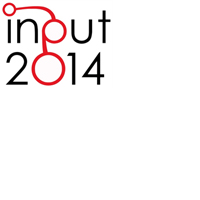Considerations on the Use of Visual Tools in Planning Processes: A Brazilian Experience
Abstract
This paper assumes that citizen participation does not really happen in relation to current urban planning practice for a number of reasons. First of all, many planning processes do not involve citizens as ideally they should. Secondly, although if they involve citizens, many planning processes are not able to communicate them the actual questions to deal with. Thirdly, many citizens have not a sufficient knowledge or ability to understand the planning issues. Therefore, the paper supposes that the use of visual interfaces can collaborate to organize data and improve the involvement of citizens within planning processes. Focusing on the Brazilian reality, the case study present two selected areas with great relevance for the Metropolitan Region of Belo Horizonte’s (MRBH): Santa Lúcia, within the municipality of Belo Horizonte, and the neighborhood Vale do Sereno, in the Nova Lima municipality. The areas result under a great pressure and intensification of anthropic interventions, containing consolidated occupancy. The example on the two areas shows how urban planning still lacks a systematization of data. This also implies that the two municipalities not consider the communication of information as a priority for developing cities. Although current information technology can offer advantages for implementing the planning processes though visual languages, harder efforts are required to build the communication process between people, including communication as part of the planning process.
Downloads
References
Batty, M. (1995) Planning support systems and the new logic of computation. Regional Development Dialogue. 16, 1: 1–17.
Batty, M. (2007) Planning Support Systems: Progress, Predictions, and Speculations on the Shape of Things to Come. London: Centre for Advanced Spatial Analysis (CASA)
Campagna, M. (/2013) Perspectives in geodesign: volunteered geographic information & planning support systems. Belo Horizonte, Universidade Federal de Minas Gerais. 30 de set. 2013. 148 p. (mimeo).
Geertman, S., Stillwell, J. (2009) Planning Support Systems: contents, issues and trends. In: Geertman, S.; Stillwell, J. (eds.) Planning Support Systems: Best Practice and New Methods. Utrecht: Springer. 1-28.
Geertman, S., Stillwell, J., (eds.) (2003), Planning Support Systems in practice. Berlin Heidelberg: Springer-Verlag,
Klosterman, R. E. (1997) Planning Support Systems: A New Perspective on Computer-Aided Planning. Journal of Planning Education and Research, Fall: 45-54. http://jpe.sagepub.com/content/17/1/45.short
Klosterman, R. E., Pettit, C. J. (2005) An update on planning support systems. Environment and Planning B: Planning and Design. 32,4: 477-484.
Kwartler, M., Longo, G. (2008) Visioning and Visualization: People, Pixels, and Plans. Cambridge: Lincoln Institute of Land Police.
Masala, E. (2014) Visualisation as a support to spatial decision processes: some considerations on the concepts behind the construction of a strategy image. In E. Masala, & G. Melis (eds.), Interactive Visualization Tool for brownfield redevelopment - A European experience. Torino: Celid. 81-94
Moura, A. C. M. (2003) Geoprocessamento na gestão e planejamento urbano. Belo Horizonte: by the author.
Pensa, S., Masala, E., & Lami, I. M. (2013). Supporting Planning Processes by the Use of Dynamic Visualisation. In Planning Support Systems for Sustainable Urban Development (pp. 451-467). Springer Berlin Heidelberg.
Ramasubramanian, L., Quinn, C. (2006) Visualizing Alternative Urban Futures: Using Spatial Multimedia to Enhance Community Participation and Policymaking. In: Campagna, M. (ed.) GIS for sustainable development. Boca Raton: CRC Press. 467- 486
Sharifi, M., Rodriguez, E. (2002) Design and development of a planning support system for policy formulation in water resources rehabilitation: the case of Alcazar De San Juan District in Aquifer 23, La Mancha, Spain. London: Journal of Hydroinformatics. 157-175. http://www.ing.unal.edu.co/gireh/docs/documentos/JOHI2002SHARIFIRODRIGUEZ.pdf
Van Wijk, J. J. (2005, October). The value of visualization. In Visualization, 2005. VIS 05. IEEE (pp. 79-86). IEEE.
Zyngier, C. (2012) Paisagens possíveis: geoprocessamento na análise da ação de agentes modeladores das paisagens urbanas dos Bairros Santa Lúcia e Vale do Sereno. Universidade Federal de Minas Gerais, Escola de Arquitetura (mimeo) http://hdl.handle.net/1843/BUOS-8YQNNJ

Copyright (c) 2014 Tema. Journal of Land Use, Mobility and Environment

This work is licensed under a Creative Commons Attribution 4.0 International License.
Authors who publish in this journal agree to the following:
1. Authors retain the rights to their work and give in to the journal the right of first publication of the work simultaneously licensed under a Creative Commons License - Attribution that allows others to share the work indicating the authorship and the initial publication in this journal.
2. Authors can adhere to other agreements of non-exclusive license for the distribution of the published version of the work (ex. To deposit it in an institutional repository or to publish it in a monography), provided to indicate that the document was first published in this journal.
3. Authors can distribute their work online (ex. In institutional repositories or in their website) prior to and during the submission process, as it can lead to productive exchanges and it can increase the quotations of the published work (See The Effect of Open Access)
